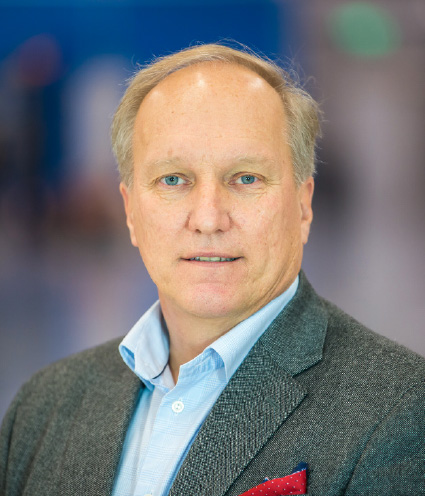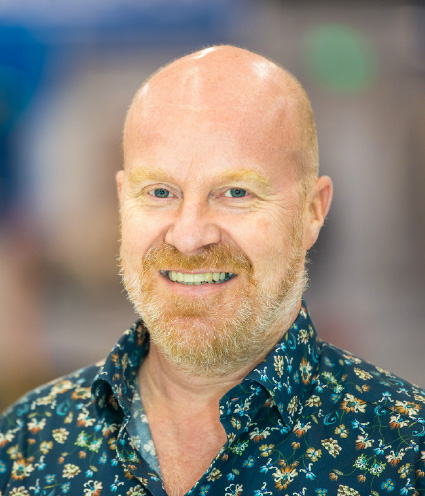Maillefer has strengthened its support and presence in India by introducing local manufacturing and supply of brand name technology destined to low voltage wire and cable manufacturers within the country.
In an exclusive joint interview with Wire & Cable India, Mr. Lars Fagerholm, CEO and Mr. Mikko Lahti, R&D Director, Maillefer Extrusion Oy, shed light upon the announcement of the local manufacturing in India, the key strengths of the product range, the recent innovations, details about the product development process, and their outlook on the crucial importance of automation and AI in improving efficiency, and optimizing operations.
Wire & Cable India: Maillefer has recently announced its expansion in India by introducing local manufacturing and supply of brand name technology; could you please elaborate on this development?
Lars Fagerholm: The low voltage machinery in the Indian market is today quite diversified when it comes to the demand of technology. The recently announced local Maillefer manufacturing is focusing on the specific needs to expand the offering available. We also believe that the local manufacturing and support to our customers in India will be highly valued. Our new approach will provide the availability of high-quality Maillefer technology directly in India.
WCI: How do you view the company’s prospects in the Indian market and what will be your strategies for serving the needs of the market and building a robust local supply chain?
LF: The low voltage cable market will strongly boost in India driven by urbanization and its consumption is projected to have mid and long-term growth. The population in urban regions is annually growing by more than 2.5%. This strong trend combined with the green energy initiatives is making India one of the potentially fastest-growing cable markets. Maillefer has a long history in India and we have a local sales and service team in Mumbai. It is our strong intent to follow this potential market growth, and assist with the best suitable portfolio and support. This is where the local supply chain will play an important role.
“We have recently introduced the first autonomous secondary coating line to the market wherein we have combined the end product quality with the process model and the line is capable of controlling itself according to the end product quality.”
WCI: Could you please briefly touch upon the product portfolio of Maillefer India for the wire and cable sector? Also, delineate on the key strengths of the product range.
Mikko Lahti: Maillefer covers the whole extrusion related wire and cable portfolio in India. We offer different lines from power cable manufacturing to copper telecom production. In power cable manufacturing, our strength is based on a very deep process knowledge which gives us competitiveness against our competitors. The process know-how is also the base for all innovations which keep us as a forerunner in this industry. The latest example of this is our patented round curing concept in power cable manufacturing that combines productivity with excellent product quality. In fiber optic cable production, our strength is in the world’s fastest secondary coating line.
We have recently introduced the first autonomous secondary coating line to the market wherein we have combined the end product quality with the process model and the line is capable of controlling itself according to the end product quality. Maillefer has a wide range of offerings in the low voltage segment. In that segment, our key technology is extrusion. Our extruders offer a stable and constant output that our customers can reduce the overconsumption to the minimum and make remarkable material savings. In telecom applications, the physical foaming combined with our extrusion knowledge is the key to success.
WCI: Has there been any development or innovation with respect to the product offerings and any technological upgradation in the recent past?
ML: In power cable manufacturing, we have introduced several innovations during the recent years. In catenary lines, we have attached the post heater in the neutral zone. Then customers could achieve higher line speeds without having the risk that the drooping will ruin the cable geometry. The recently patented solution is our round concept where rapid impulse heating is introduced to the insulation material directly after the crosshead in the curing tube. This enables extreme productivity with excellent product quality. We have also developed a new measurement device called topography scanner, which offers a way to continuously monitor extrusion quality, find an optimal set of parameters, and increase CV line productivity. Another notable aspect of this device is the ability to scan the whole cable core surface during production. If there are any defects visible on the cable core surface, they are detected and immediately reported to the operator.
WCI: With a vast portfolio of more than 50 technologies, Maillefer also holds 22 patent families, which is the highest in the industry. Could you please take us through the product development process in the wire & cable segment succinctly while also describing the key value proposition which makes the company one of the leading players in the sector?
ML: Maillefer has a wide customer interface. We annually collect the customer needs through our sales and agent network as well as our own technology group. Then all the inputs are listed and prioritized. Every year, we run around 3-6 different R&D products covering some of our applications. We need to minimize the number of projects in order to increase the efficiency of finalizing them. On top of that, we do several small product maintenance projects to keep our portfolio operational.
Considering our long history of developing technology for the wire and cable industry, I would say that we have gained an immense knowledge of the processes. The data collection, its analysis, and implementation are what that helps us constantly improve our lines and get an edge over the competitors.
WCI: Kindly give a brief outline on the Company’s efforts in R&D and innovation. How pertinent do you consider the role of innovation to ensure productivity and attain consistent growth?
ML: The equipment’s efficiency is the most crucial factor as far as manufacturing activity is concerned. There are times when our customers are interested more in knowing the outcome of a solution that we provide than in the initial investment. We basically want our solution to prove cheaper for the customers in the long run and it has turned out to be true with our existing customers, who are getting a definite payback. Despite the positive implications of our solutions, in the long run, pricing often comes as a difficult topic to discuss with Indian clients. We are always more than ready to prove how our solutions would prove cost-effective with quality yield over a long period.
WCI: Since the application of AI and automation technology enables the manufacturer to improve efficiency, fasten processes, and optimize operations; how would you describe the factors and technological capabilities which give a major competitive advantage to Maillefer in this regard?
ML: At present, the trends such as AI and automation are causing a great upswell of interest in industries across the spectrum and are a big driving force for us as well. Today, data is a greatly powerful tool – to closely monitor and control operations. In our AI solution, everything is based on a huge amount of data and the deep knowledge from the processes under investigation. However, mere data collection is of no use unless it is analyzed to troubleshoot and upgrade the technology. Even though the industry has the data for decades, its convincing use has still not begun. We are measuring a huge pile of data in the product lines that we are offering. Presently, we have also started to utilize the data. Nowadays, we have our first real AI offerings launched to the market – smart buffering and topography scanner. In smart buffering, the line can autonomously control itself leading to extremely efficient production with minimal raw material consumption. In the topography scanner, we have developed a neural network-based inspection method for identifying defects from the cable surface which will help our customers to save remarkable amounts of money, not making scrap in the post processes.
We know what data should be measured and what devices should be used in our lines and machines. The devices help us to analyze the data and make decisions in terms of controlling our actions. This utilization of data immensely helps us in our R&D with regard to designing a perfect machine. Designing and manufacturing machines are basically what we do, but once we have analyzed previous data we can envision better machines – more efficient extruders and crossheads. A deeper knowledge of the process is also critical in order to better utilize the data to get a conclusive idea of how the machines have been working previously and how we can optimize it more. Hence, the acute data measurement and analysis coupled with extensive process knowledge is the key to the success of our R&D.






